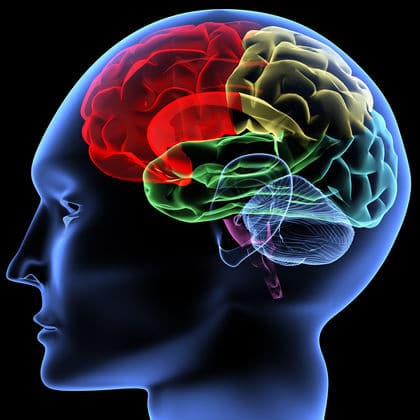How Does Acupuncture Work?
Published on November 9, 2014 by Dr. Caitlin Gordon
1. Neurotransmitter Theory

Acupuncture affects higher brain areas, stimulating the secretion of beta-endorphins and enkephalins in the brain and spinal cord. The release of neurotransmitters influences the immune system and the antinociceptive system. 7,8,9
2. Autonomic Nervous System Theory
Acupuncture stimulates the release of norepinephrine, acetylcholine and several other types of opioids, affecting changes in their turnover rate, normalizing the autonomic system, and reducing pain. 10, 11
3. Vascular-interstitial Theory
Acupuncture affects the electrical system of the body by creating or enhancing closed-circuit transport in tissues. This facilitates healing by allowing the transfer of material and electrical energy between normal and injured tissues. 9
4. Blood Chemistry Theory
Acupuncture affects the blood concentration of triglycerides, cholesterol, and phospholipids, suggesting that acupuncture can both raise and diminish peripheral blood components, thereby regulating the body toward homeostasis. 9
5. Gate Control Theory
Acupuncture activates non-nociceptive receptors that inhibit the transmission of nociceptive signals in the dorsal horn, “gating out” painful stimuli. 12
Effects on Pain, In-Depth
So what is already demonstrated about the mechanism of acupuncture in analgesia? Firstly, acupuncture signal travels up the spinal cord to the brain (via at least four different ascending pathways) along both A-delta and C-fibers. A delta fiber sensation is what the Chinese call “tong” – sharp unbearable pull-away pain. C-fiber sensation travels much more slowly and is what the Chinese call “de qi”-distension, heaviness, soreness or aching and numbness. When acupuncture signal reaches the brain and completes the mesolimbic loop between brain and brain stem centers, a descending signal is initiated which travels via a number of descending pathways to the dorsal horn of the spine. Here the Melzack and Wall “pain gate” is activated which allows the ascending C-fiber signal to inhibit the ascending A delta fiber signal. This is when acupuncture analgesic effects occur. It has recently been demonstrated that the mechanical stimulation of the muscle tissue by an acupuncture needle produces a local release of adenosine which triggers the ascending C-fiber signal and that blocking the adenosine blocks acupuncture analgesia. Also blocking of the C-fiber signal at any point in the ascending or descending tracts blocks acupuncture analgesia (for example by lesioning nerves or injecting local anesthetic). Also, acupuncture analgesia can be inhibited or totally blocked by interruption of any of the steps in the mesolimbic loop (as shown by decades of painstaking research by Han Jisheng).
 So in summary: 1. needle insertion triggers local adenosine which triggers ascending C-fiber signal. 2. ascending C-fiber signal reaches the brainstem and brain and activates the mesolimbic loop. 3. The completion of the mesolimbic loop triggers a descending C-fiber signal to the dorsal horn of the spine. 4. The descending C-fiber signal activates the pain gate which blocks ascending A delta pain signal. If C-fibers are disrupted then acupuncture analgesia is blocked because the intact C-fiber signal is essential to acupuncture analgesic effects. The mediators of acupuncture analgesia are numerous. The main groups of opioid mediators are enkephalins, endorphins, dynorphins and endomorphins. Non-opioid mediators include serotonin, noradrenaline, dopamine, acetylcholine, GABA, oxytocin, glutamate, adenosine and much more.
So in summary: 1. needle insertion triggers local adenosine which triggers ascending C-fiber signal. 2. ascending C-fiber signal reaches the brainstem and brain and activates the mesolimbic loop. 3. The completion of the mesolimbic loop triggers a descending C-fiber signal to the dorsal horn of the spine. 4. The descending C-fiber signal activates the pain gate which blocks ascending A delta pain signal. If C-fibers are disrupted then acupuncture analgesia is blocked because the intact C-fiber signal is essential to acupuncture analgesic effects. The mediators of acupuncture analgesia are numerous. The main groups of opioid mediators are enkephalins, endorphins, dynorphins and endomorphins. Non-opioid mediators include serotonin, noradrenaline, dopamine, acetylcholine, GABA, oxytocin, glutamate, adenosine and much more.
The above explanation is from John McDonald, L.Ac. in Australia.
Resources
Check out more research here.
• 1. “A review of the incorporation of complementary and alternative medicine by mainstream physicians”, Astin, JA., et. al., Arch Intern Med., 1998; (158).
• 2. The Institute for Work & Health, “Massage for Lower Back Pain”, Spine, 2009, July 15: 34 (16).
• 3. “German Acupuncture Trials (GERAC) for Chronic Lower Back Pain”, Archives of Internal Medicine, 2007; 167(17).
• 4. Department of Medicine and Health Sciences, “Acupuncture Just as Effective Without Needle Puncture”, Science Daily, December 1, 2008, study conducted by the at Linkoping University and the Vardal Institute in Sweden.
• 5. “Effects of Acupuncture of Pregnancy and Live Births Among Women Undergoing In Vitro Fertilization: Systematic Review and Meta-Analysis”, British Medical Journal, 2008: 336: 545, published February 7, 2008.
• 6. “Immunomodulatory Effects of Acupuncture in the Treatment of Allergic Asthma: A Randomized Controlled Study”, The Journal of Alternative and Complementary Medicine, Vol 6, Issue 6, 2007.
• 7. Neuro-acupuncture, “Scientific evidence of acupuncture revealed”, Cho, ZH., et al., 2001.
• 8. Acupuncture – A scientific appraisal, Ernst, E., White, A., 1999, p. 74.
• 9. Acupuncture Energetics, “A Clinical Approach for Physicians”, Helms, Dr. J., 1997, pgs 41-42, 66.
• 11. National Institute of Health Consensus Conference on Acupuncture, “Acupuncture Activates Endogenous Systems of Analgesia.”, Han, J.S., 1997 (Bethesda, MD).
• 12. Neuro-acupuncture, “Scientific Evidence of Acupuncture Revealed”, Cho, ZH., et al., p.116.






